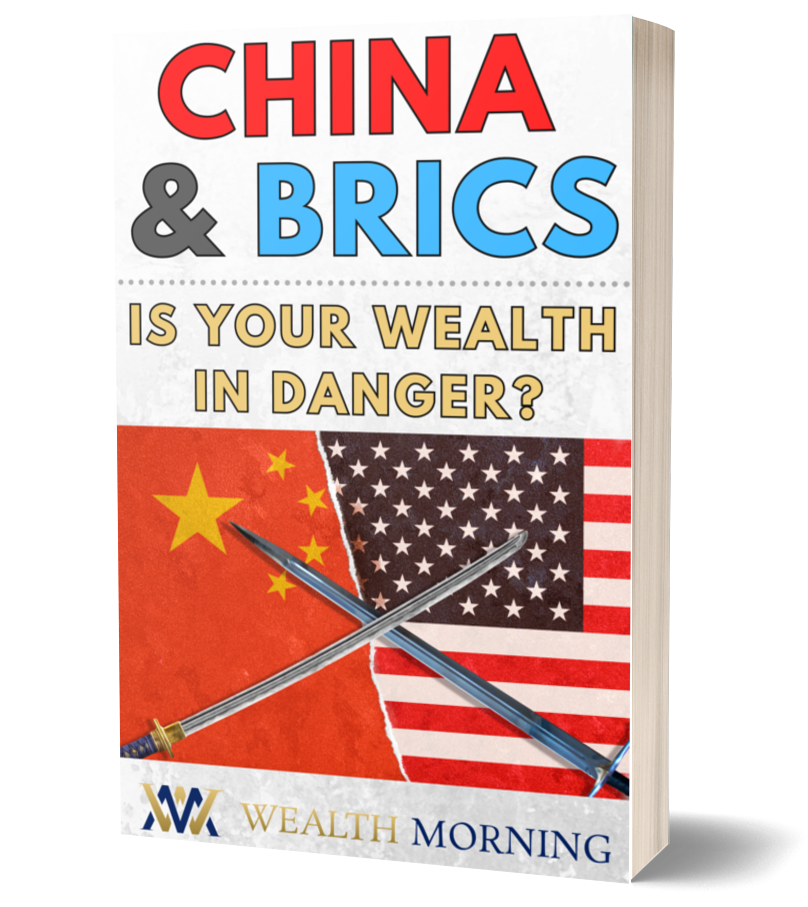While much of the rest of the world is at war with the virus, old friend Byron King notes that we are fighting a guerre du luxe down here in the valley…happily isolated from the enemy while enjoying the wonders of nature.
We begin by noticing that this is a drôle de guerre.
In the trenches opposite us is said to be a savage killer. It’s a virus with a Facebook page, a Twitter account, and a PR firm. It’s gotten more press…and more eyeballs…than any ailment ever visited on the human race.
If it were a stock, it would be overexposed…overpriced…and overhyped. We would sell it short.
We also note that different countries are using different strategies to fight the invasion.
Here in Argentina, as in the U.S., the feds have gone into Total War mode…To the barricades!…locking down the economy to prevent the bug’s advance.
Sweden and Japan, on the other hand, have their defenses up…but life goes on, more or less, normally.
Bloomberg:
The 10 million-strong Swedish population looks no more immune to it than its neighbors: Sweden has 2,510 cases and 42 deaths, according to data compiled by Bloomberg, compared with 2,916 cases and 12 deaths in Norway and 2,014 cases and 34 deaths in Denmark.
Yet the Danes have shut schools and many businesses, banned large gatherings, and handed the government sweeping emergency powers; Sweden has gone down a more laissez-faire route. Schools, bars and cafes are still open. Social distancing is recommended, but only those aged over 70 or otherwise at risk are asked to stay home.
What to make of it? Is a lockdown necessary?
Does it do more harm than good? Or does it merely provide an excuse for doing things that the feds wanted to do anyway?
News flash: bull market or depression?
Meanwhile, a news flash from The Wall Street Journal:
Dow Escapes Bear Market With a 6% Rally
The blue-chip index is now up 20% from its low, qualifying as a new bull market. U.S. stocks soared higher Thursday, even after data showed the ranks of unemployed Americans surged in the past week, signaling that investors remain hopeful that a $2 trillion stimulus package can help save the country’s weakening economy.
But wait…New unemployment claims for the week ending on March 21 were staggering — more than 3 million, or four times higher than the previous record set 38 years ago!
And the number of novel coronavirus cases in the U.S. now surpasses those in China.
Hmm…The stock market is off to the races. Wait again…Darn! The Dow is down again…almost 1,000 points down as we write.
Which is it? Up or down? Bull market…or depression?
The best answer is ‘both.’ Fire and ice. Fever and chills. The heat of war…and the cold mud of the grave.
But you have to look at stocks in terms of gold in order to see what is really going on…
Gold: not always even, but never far off for long
Investors in the ’70s had the impression that they were not making money, but not losing it either. The Dow began the decade more or less where it ended it. In the 800s.
And yet, in real terms…after an adjustment for inflation…investors had lost more than 90% of their money.
We know that by looking at the Dow in terms of the old, pre-1971 dollar. That dollar was anchored to gold…which is anchored to the earth itself.
As GDP goes up and technology improves…output goes up, too. It becomes easier to mine gold.
But the easy gold is quickly mined out…so miners have to go deeper into the earth…to more marginal deposits…and more expensive operations.
The effect is to keep gold — and the world’s supplies of goods and services — in a rough balance, not always even…but never too far off for too long.
That’s why gold has been such a good ‘store of value’ for thousands of years…while 599 different paper currencies disappeared.
On the evidence, no paper currency can be expected to last for very long.
But back to the question: Where’s the bottom?
We know that, historically, a real bear market in U.S. stocks takes them down to where you can buy all the 30 Dow stocks for 5 ounces of gold — or less.
That is as reasonable an expectation today as it was in previous bear markets. And assuming the price of gold stays at $1,600 per ounce, that will mean a Dow around 8,000.
Most likely the price of gold will rise as the Dow declines…giving us a target for the Dow (in today’s dollars) somewhere in the middle…or around 15,000.
But the bottom could also be right here…right now. Prices could stay right where they are, nominally…as real values sink.
Gold is the obvious place for your money today
The obvious place for your money during this deflationary period is, of course, gold. Real gold. Gold you can hold in your hands…if you can get it. (So many people are trying to buy gold that dealers report that they are running out.)
Watch out, though. As the going gets rough, governments are likely to want real money, too. In Argentina, there is widespread suspicion that the government is planning to close the banks and clean out private safe deposit boxes.
In America, too, it was in the Franklin Roosevelt years that feds decided to make private holdings of gold illegal.
People dutifully turned in their gold at the statutory rate, getting paper currency in exchange. Then, the feds devalued the paper currency against gold by 69%.
Importantly, the Roosevelt gang did not make it illegal to own gold mining companies. The shares in Homestake Mining, for example, continued to rise, despite both the Great Depression and the ban on personal gold holdings.
So what does that mean for investors today?
After the stock market finally finds its bottom, prices will go up. But as we cautioned yesterday, we doubt that this will be the result of a genuine Main Street boom.
This is not like the Post-WWI period in the U.S. This is more like the Post-WWI period in Germany.
Desperate to keep the economy from falling apart…and to avoid angry mobs…the German government printed money. We all know what happened next.
Can’t fake the real value of gold
In the U.S., the money-printing has already begun.
The enemy is approaching! Break out the ammunition!
In the hysteria, the Federal Reserve has added nearly $1 trillion in the last two weeks. And now it is printing at the rate of $125 billion PER DAY. Sooner or later, that money will begin to light up the Big Board on Wall Street.
But while the feds can raise prices, they can’t raise values. Stocks will rise, but the real value of the companies themselves will probably fall.
Here’s another way to look at this. The feds control the printing press. With it they can drive up prices for just about everything…except for one thing: the dollar itself.
As prices rise for goods, services, and assets…it means the purchasing power of each dollar is going down. The dollar will be the gasket that blows…releasing the pressure from trillions of dollars’ worth of fake money.
When that happens, the most obvious investment you can own is still gold (or possibly some cryptocurrency)…which rises as the dollar falls.
And the worst investments you can own will be those that depend on a fixed stream of dollar earnings.
Coming soon: the inflationary phase
Already, both bonds and the dollar may be telling us that the switch from deflation to inflation may not be far off.
The bond market seems to have just topped out.
The feds are going to do ‘whatever it takes’ to keep stock and bond prices high — at least in nominal terms.
They’ll buy bonds by the boatload to keep prices high.
But like stocks in the ’70s, the ground will give way beneath them. The dollar — in which bonds are quoted — will sink against almost everything else, especially gold.
Here’s a Bloomberg report from this morning:
Dollar Heads for Worst Week Since 2009
Two weeks after investors dumped everything they could to hoard U.S. dollars, some are now happy to sell.
The Bloomberg Dollar Spot Index is headed for its biggest weekly loss since 2009, with the greenback sliding against 16 major peers. Traders point to a confluence of reasons, ranging from less stress in funding markets, the repatriation of funds as the quarter ends and the worsening coronavirus outbreak in the U.S.
Watch out…
Regards,
Bill Bonner





Since founding Agora Inc. in 1979, Bill Bonner has found success and garnered camaraderie in numerous communities and industries. A man of many talents, his entrepreneurial savvy, unique writings, philanthropic undertakings, and preservationist activities have all been recognized and awarded by some of America’s most respected authorities. Along with Addison Wiggin, his friend and colleague, Bill has written two New York Times best-selling books, Financial Reckoning Day and Empire of Debt. Both works have been critically acclaimed internationally. With political journalist Lila Rajiva, he wrote his third New York Times best-selling book, Mobs, Messiahs and Markets, which offers concrete advice on how to avoid the public spectacle of modern finance.